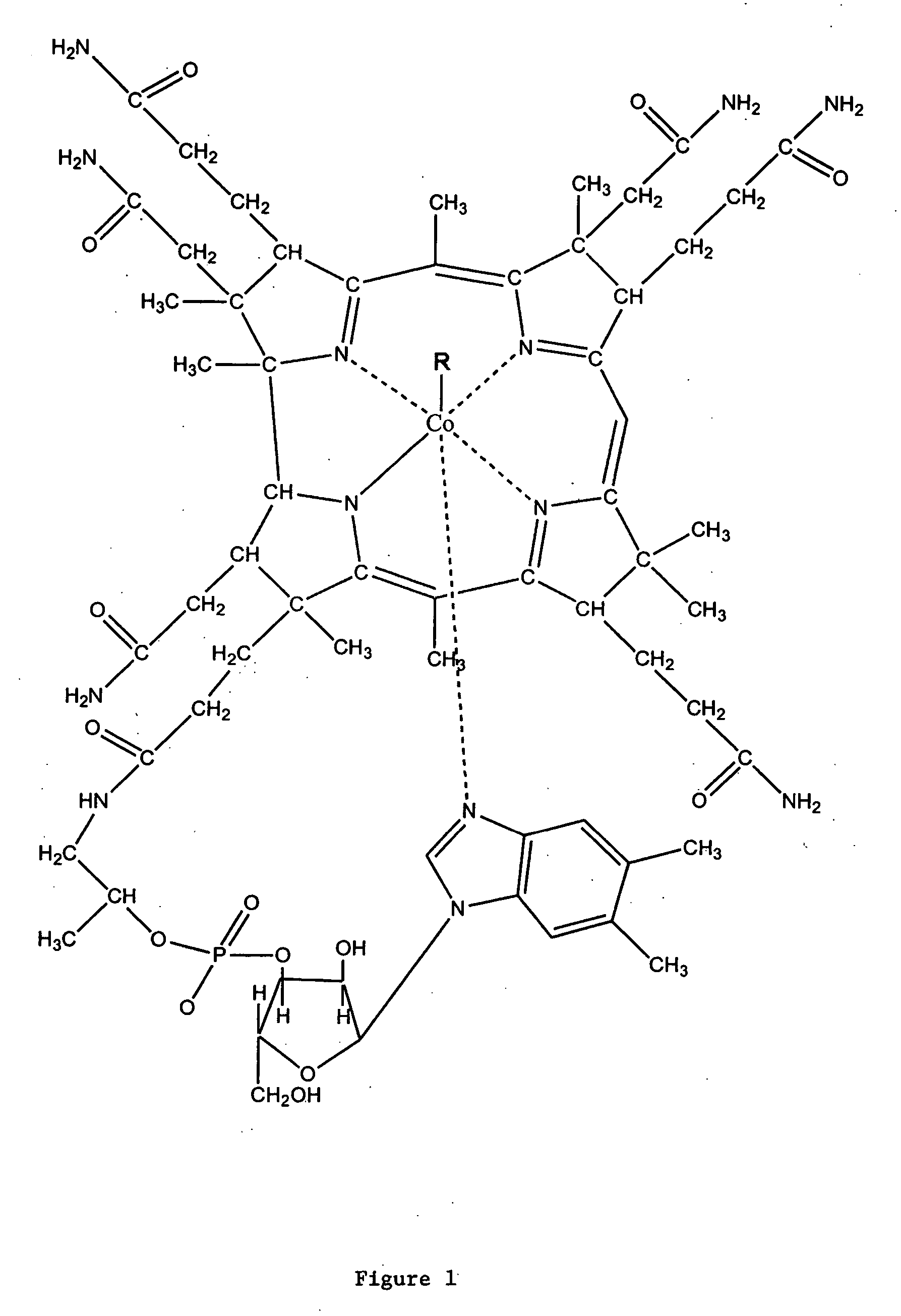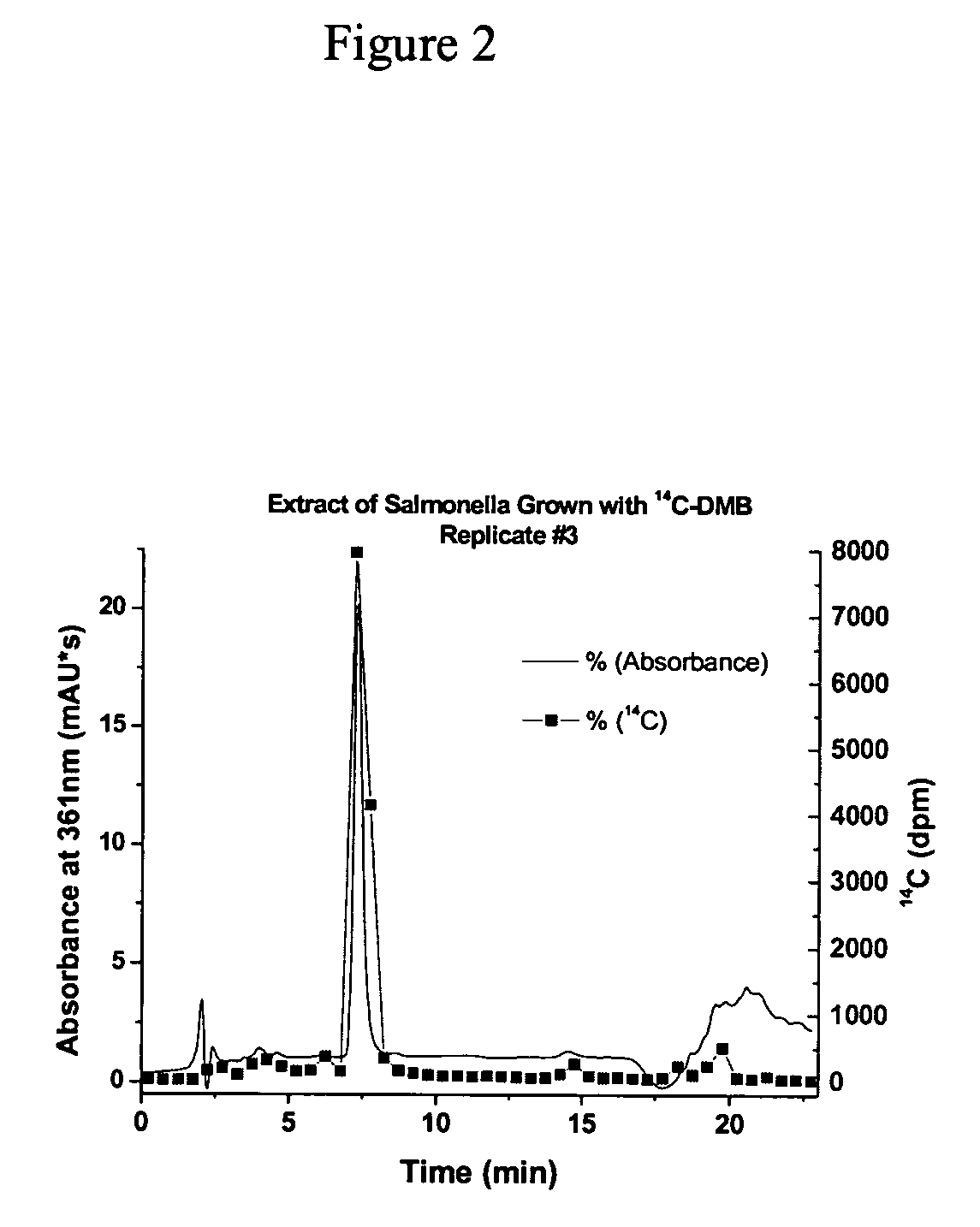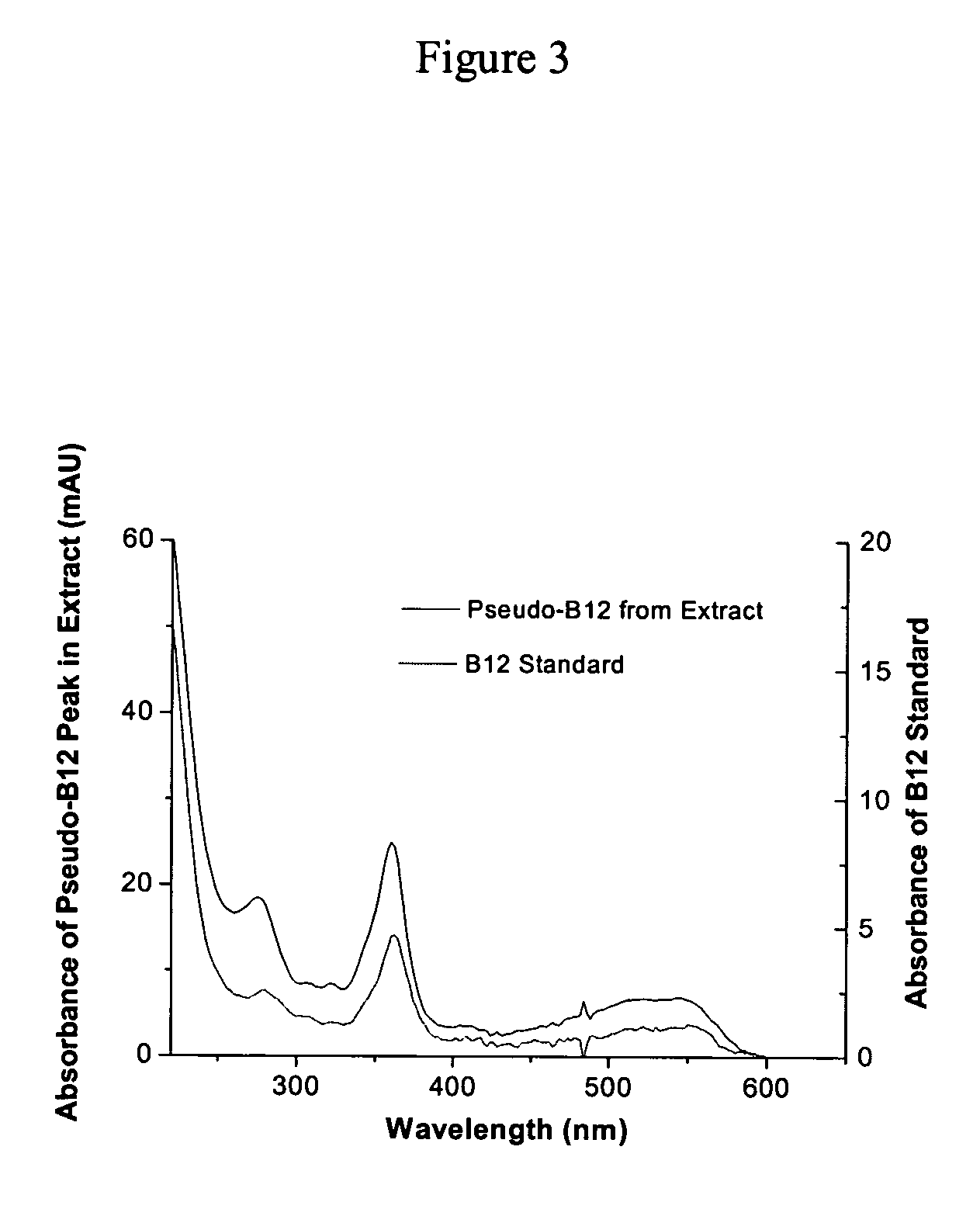Assay for vitamin B12 absorption and method of making labeled vitamin B12
a technology of vitamin b12 and absorption, which is applied in the field of vitamin b12 absorption and labeling of vitamin b12, can solve the problems of increasing the incidence of neurological damage, cumbersome tests, and unreliable and expensive tests, and achieves the effects of increasing the total radioactive yield, short shelf life, and increasing volum
- Summary
- Abstract
- Description
- Claims
- Application Information
AI Technical Summary
Benefits of technology
Problems solved by technology
Method used
Image
Examples
example 1
[0072] Example describes the synthesis of 14C-dimethylbenzimidazole.
(a) Chemical Synthesis.
[0073] Synthesis of the 14C-dimethylbenzimidazole was performed using a procedure modified from Phillips. (Phillips, M. A. J Chem Soc, page 2393 (1928)). Formic acid, sodium salt [14C] in ethanol, 1 mCi (0.0182 mmoles; Moravek Biochemicals; Brea, Calif.), was placed into a 10 mL boiling flask and 500 μL phosphate buffer at (pH 7.4, 100 mM) was added. The ethanol and water solvents were evaporated to dryness using a rotary evaporator under reduced pressure. The residue was resuspended in 1 mL of 4N HCl and 111 μmoles o-dimethylphenylenediamine was added. The flask was placed in a sandbath and equipped with a water-chilled condenser. The reaction was heated to reflux for 2 hours. The flask was allowed to cool to room temperature and the contents neutralized with concentrated aqueous ammonia to pH 7.
(b) Solid-Phase Extraction (SPE).
[0074] SPE cartridges (5 g bond Elut C18, Varian; Palo Alto...
example 2
[0076] This Example sets forth and discusses the results of the synthesis set forth in the previous Example.
[0077] A small aliquot of sample was injected into the HPLC and 30-second fractions were collected and analyzed for 14C by LSC. The resulting 14C counts (in disintegrations per minute) were co-plotted with the UV / vis absorbance of the chromatogram over time.
[0078] The entire product was run in multiple injections through the HPLC and the peak in each run corresponding to the DMB was collected and pooled. The collection was evaporated to dryness and the resulting 0.35 mCi 14C-DMB was resuspended in ethanol for future use in labeling experiments with the bacteria. The total yield of purified 14C-DMB was 0.35 mCi or 35%.
[0079] The yield from the 14C-DMB synthesis was only 35% of the theoretical yield. One possible explanation for the low yield is that some DMB stuck to the SPE column and was never eluted. To test this possibility, 3.4 nCi of 14C-DMB was loaded onto an SPE colu...
example 3
[0081] This Example describes the production of 14C-labeled B12 in Salmonella enterica. The strain used was a derivative of Salmonella enterica serovar Typhimurium strain LT2, strain TT24733, genotype cbiD24::MudJ (John Roth, U C Davis).
[0082] (a) Labeling Medium. Labeling medium consisted of no citrate E (NCE) medium (Davis, R., Botstein, D., Roth, J., Advanced Bacterial Genetics. Cold Spring Harbour Laboratory, New York (1980)), supplemented with sterile solutions of: glycerol (Mallinckrodt; Phillipsburg, N.J.) to give a final concentration of 5 mM, ethanolamine hydrochloride (Sigma; St.Louis, Mo.) to give a final concentration of 40 mM, and dicyanocobinamide (Sigma; St.Louis, Mo.) to give a final concentration of 250 nM. Approximately 130 mL of labeling medium was added to a sterile 500 mL conical flask and 14C-DMB was added.
[0083] Inoculum was prepared by streaking the S. typhimurium serovar Typhimurium onto a LB plate and incubating for about 16 hours to obtain single colonie...
PUM
| Property | Measurement | Unit |
|---|---|---|
| mass | aaaaa | aaaaa |
| mass | aaaaa | aaaaa |
| half life | aaaaa | aaaaa |
Abstract
Description
Claims
Application Information
 Login to view more
Login to view more - R&D Engineer
- R&D Manager
- IP Professional
- Industry Leading Data Capabilities
- Powerful AI technology
- Patent DNA Extraction
Browse by: Latest US Patents, China's latest patents, Technical Efficacy Thesaurus, Application Domain, Technology Topic.
© 2024 PatSnap. All rights reserved.Legal|Privacy policy|Modern Slavery Act Transparency Statement|Sitemap



